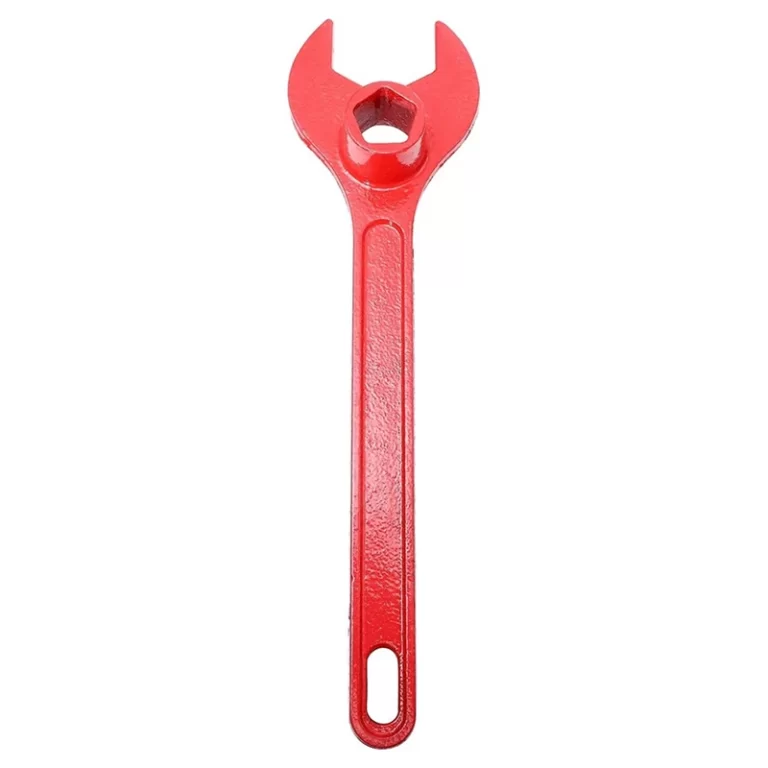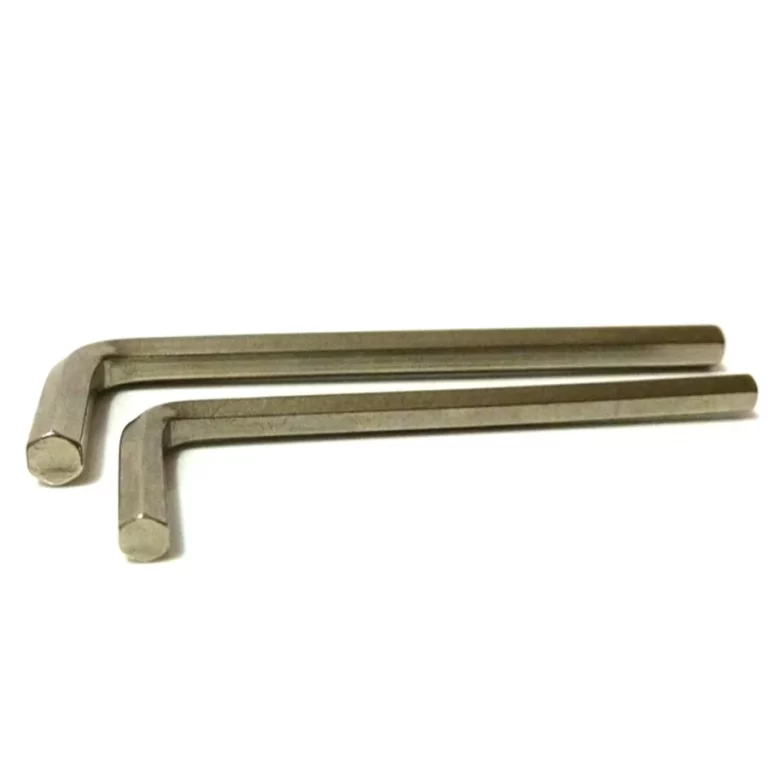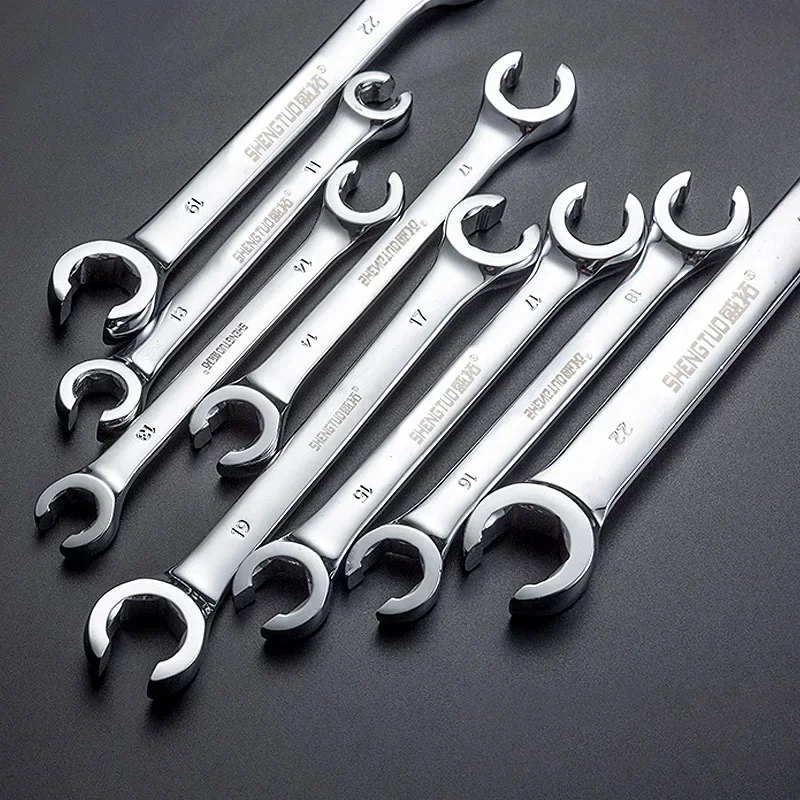
Brake Line Wrench Tips Every DIY Mechanic Should Know in 2025
A brake line wrench is one of the most essential tools when servicing a vehicle’s braking system. It allows mechanics to loosen or tighten brake line fittings without damaging the soft metal nuts. Unlike standard wrenches, this tool provides full contact around the nut, reducing slippage and preventing rounding. As a result, repairs are faster, safer, and more reliable. Because brake systems rely on hydraulic pressure, any leak from a damaged fitting can compromise stopping power. Therefore, using the correct tool matters. A high-quality brake line wrench ensures clean, secure connections every time. Whether you’re replacing a hose or installing new calipers, this specialized tool makes a noticeable difference. This guide covers everything from design features to usage tips, helping both DIYers and professionals get the best results.
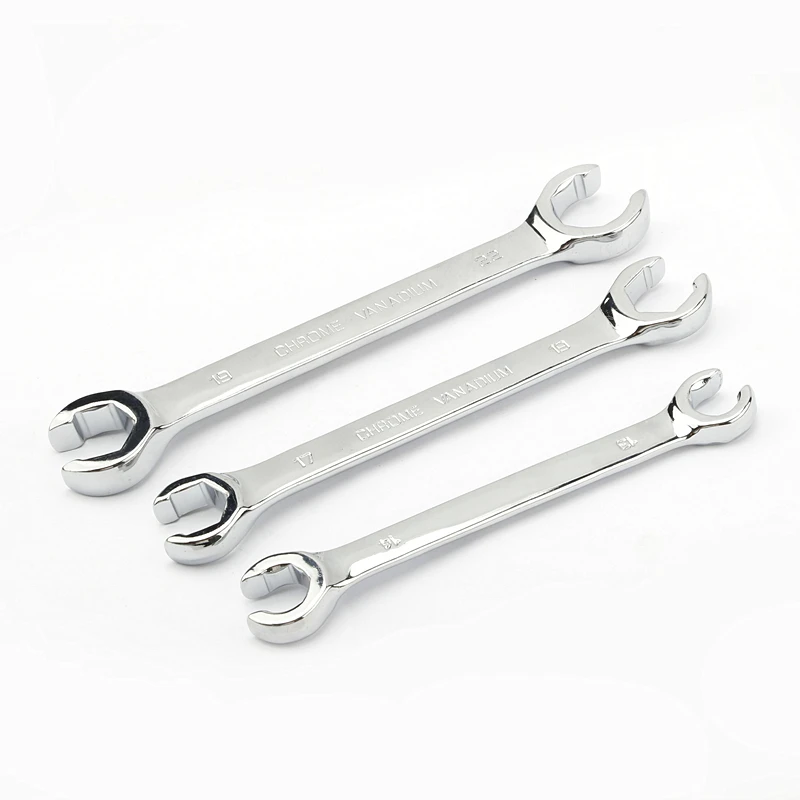 Why a Brake-Line Wrench Beats Standard Wrenches
Why a Brake-Line Wrench Beats Standard Wrenches
Standard wrenches often fail when used on brake lines. Their open ends make contact with only two flats of the nut, increasing slippage risk. In contrast, a brake line wrench fully encloses the fitting with a six-point box end. This design spreads force evenly across all sides. Consequently, there’s less chance of stripping the nut. Since brake line fittings are usually made from softer metals like copper or aluminum, they dent or deform easily. A proper brake line wrench prevents this damage. Additionally, many models feature an offset head, allowing access in tight spaces behind wheels or near the master cylinder. As a result, users gain better leverage without removing surrounding parts. Most are forged from chrome vanadium steel, which resists bending under pressure. Plus, the polished finish resists rust from brake fluid exposure. For these reasons, a dedicated brake line wrench outperforms general-purpose tools.
Enhanced Grip Through Precision Engineering
The jaw design of a brake line wrench plays a major role in its effectiveness. Six-point openings grip hex nuts more securely than 12-point versions. This means torque transfers efficiently without cam-out. Also, the enclosed box end prevents lateral movement during use. As a result, even stubborn or corroded fittings can be loosened safely. Many models include a slim profile near the head, enabling access in narrow engine compartments. Meanwhile, longer handles increase leverage, reducing physical strain. Some brands add knurled grips or rubberized coatings for better control in oily conditions. These small details improve safety and efficiency. Laser-etched size markings help identify the correct tool quickly. Thus, workflow stays smooth during complex jobs. Every element—from jaw depth to handle length—is optimized for real-world use. Because of this attention to detail, a well-made brake line wrench delivers consistent performance over years of service.
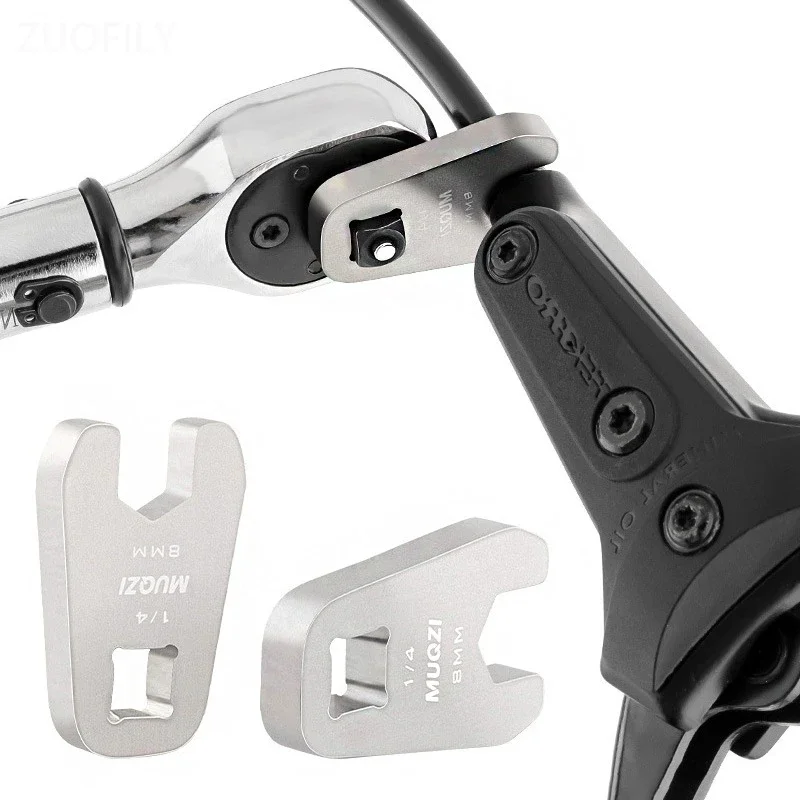 Matching Wrench Size to Your Vehicle’s Needs
Matching Wrench Size to Your Vehicle’s Needs
Choosing the right size is critical for effective brake work. Most modern vehicles use metric fittings such as 8mm, 10mm, or 11mm. However, older American cars may require SAE sizes like 3/8 inch or 7/16 inch. Therefore, having both types available ensures compatibility. Some toolkits include dual-scale wrenches labeled in both systems. Others offer individual pieces for greater accuracy. Flare nut wrenches are commonly used interchangeably with brake line wrenches. They feature a slightly tapered opening that fits snugly over line nuts. This reduces stress on the tubing during tightening. Ratcheting brake line wrenches are another option. They allow continuous turning without repositioning the tool. While more expensive, they save time during repetitive tasks. Before buying, check your vehicle’s service manual for recommended fitting sizes. That way, you’ll avoid guesswork and ensure a perfect fit every time.
Materials That Ensure Long-Term Reliability
High-quality materials define a durable brake line wrench. Chrome vanadium steel is the industry standard due to its strength and resistance to fatigue. When properly heat-treated, it withstands repeated torque without deforming. Cheaper alternatives made from low-carbon steel may bend or crack prematurely. Worse, broken tools can leave debris inside brake components. A polished chrome coating adds corrosion resistance. This matters because brake fluid and road moisture accelerate rust. Some premium brands apply additional protective layers for extended life. Ergonomic handles reduce hand strain during prolonged use. Although higher-end models cost more, their longevity justifies the price. After all, replacing damaged tools wastes money and delays repairs. Always inspect the finish and weight before purchasing. A solid feel in hand often indicates superior construction. Investing in a trustworthy brand pays off in reliability and safety.
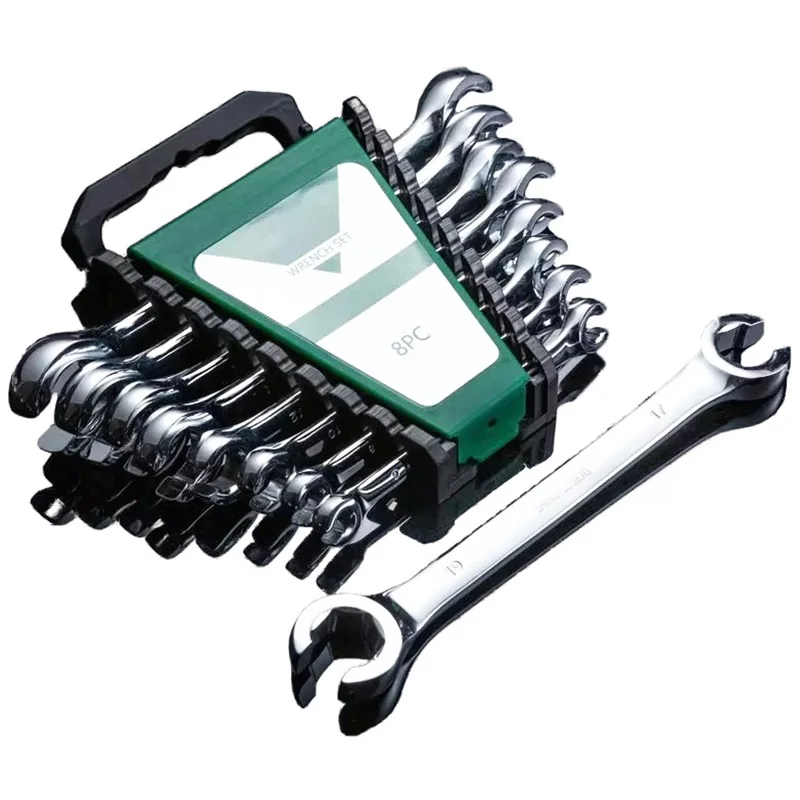 Correct Techniques for Safe Operation
Correct Techniques for Safe Operation
Begin by selecting the exact size needed for your brake fitting. Slide the wrench fully onto the nut before applying force. Pull toward your body instead of pushing away. This gives better control and lowers slip risk. If the nut is stuck, tap the handle gently with a soft mallet. Avoid using extension pipes or excessive force. These can twist or break the brake line. Turn counterclockwise to loosen and clockwise to tighten. During reassembly, start by hand to prevent cross-threading. Then use the brake line wrench for final tightening. Never overtighten—this can crack fittings or crush tubing. Follow factory torque specifications whenever possible. After reconnecting lines, bleed the brakes to remove air. Finally, test the system before driving. Inspect for leaks at each connection point. Proper technique protects both your vehicle and your safety.
Avoiding Common Errors in Brake Maintenance
Using the wrong tool is a frequent mistake. Adjustable wrenches may seem convenient, but they often slip and damage fittings. Always use a proper brake line wrench instead. Another error is reusing old copper crush washers. These compress during installation and lose sealing ability if reused. Always replace them with new ones. Cross-threading occurs when threads aren’t aligned before tightening. To prevent this, start the nut by hand slowly. Skipping brake bleeding leads to spongy pedal feel. Air in the lines reduces braking efficiency significantly. Also, hanging a caliper by its hose strains internal seals. Support it with wire or a hook instead. Rushing through steps increases the chance of mistakes. Take time to double-check each connection. Small oversights can lead to major failures later. Preventing these issues ensures safe, long-lasting repairs.
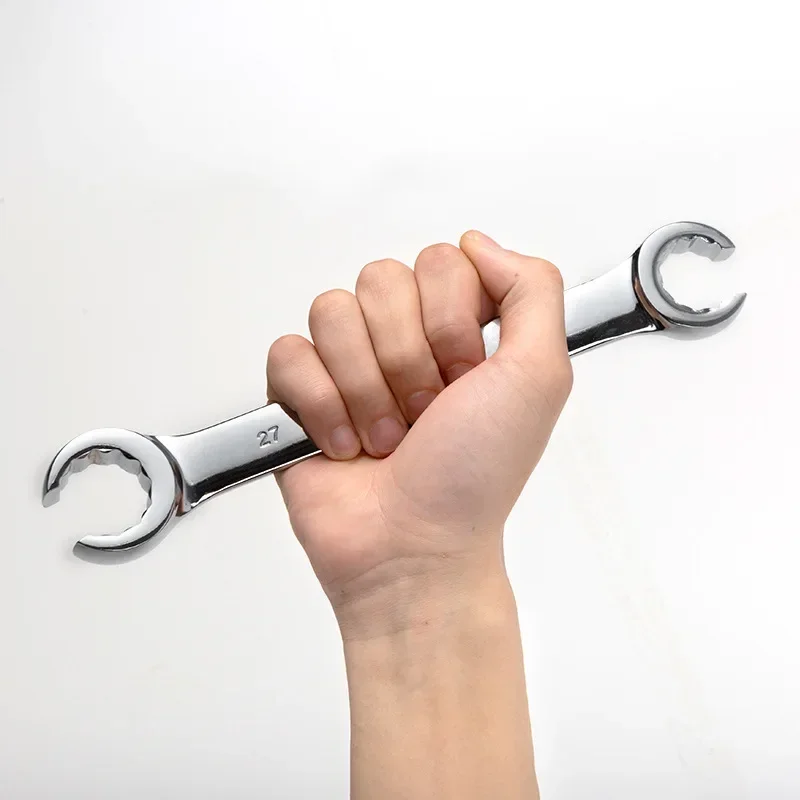 Top Brands and What Sets Them Apart
Top Brands and What Sets Them Apart
Several brands stand out in the brake line wrench market. GearWrench offers durable sets with lifetime warranties. Their tools feature precise sizing and strong box ends. Tekton provides excellent value with reliable performance. Users praise its clean laser markings and smooth finish. OEMTools focuses on affordability while maintaining function. Their kits suit beginners and casual users well. SATA produces ratcheting models that boost efficiency. These allow quick turns in confined areas without removing the wrench. Knipex manufactures German-engineered options known for precision. Their corrosion-resistant coating enhances durability. While more expensive, they last longer under heavy use. Generic brands vary in quality. Some have inconsistent sizing or weak metal. Reading reviews helps identify trustworthy options. Look for feedback on grip, durability, and fit accuracy. Choosing a reputable brand ensures dependable results over time.
Features of Ratcheting Brake-Line Wrenches
Ratcheting brake line wrenches offer added convenience in tight spots. They let you turn nuts without lifting the tool after each stroke. This saves time during disassembly and reassembly. Most models include a directional switch for forward or reverse motion. As a result, you can alternate directions seamlessly. The mechanism is sealed to keep dirt and grease out. Still, occasional cleaning maintains smooth operation. These wrenches tend to be slightly bulkier than fixed versions. However, the trade-off in speed is often worth it. Mechanics working on multiple vehicles benefit most. DIYers doing occasional repairs may prefer simpler, non-ratcheting tools. Either way, ensure the ratcheting model fits common brake sizes. Check for sturdy construction and smooth action before buying. With proper care, a ratcheting brake line wrench becomes a long-term asset.
Frequently Asked Questions
What does a brake line wrench do?
It safely loosens and tightens brake line fittings without damaging soft metal nuts.
Can I substitute a regular wrench?
Not recommended. Standard wrenches often slip and round off corners, causing leaks.
Are flare nut wrenches the same?
Yes, they are nearly identical and often used interchangeably for brake jobs.
Do I need multiple sizes?
Yes. Common sizes include 8mm, 10mm, and 3/8 inch. A set covers most needs.
Is a ratcheting version worth buying?
If you work frequently on brakes, yes. It speeds up the process significantly.
How should I store my wrench?
Keep it dry and clean. Wipe off brake fluid and apply light oil if needed.
Can a worn wrench be repaired?
No. Damaged jaws cannot be fixed. Replace the tool to avoid failure.
Why does my wrench slip despite correct size?
Check for dirt, wear, or incorrect fit. Clean it and verify the nut matches exactly.
 Final Thoughts
Final Thoughts
In summary, a brake line wrench is a vital tool for anyone maintaining or repairing brake systems. Its precision design prevents damage and ensures secure connections. By using the right size and following proper techniques, you enhance both safety and efficiency. Avoiding common mistakes further improves outcomes. Whether choosing a basic model or a ratcheting version, prioritize quality and fit. Over time, this small investment pays off in reliability and peace of mind. Always keep your brake line wrench clean and ready for the next job.
